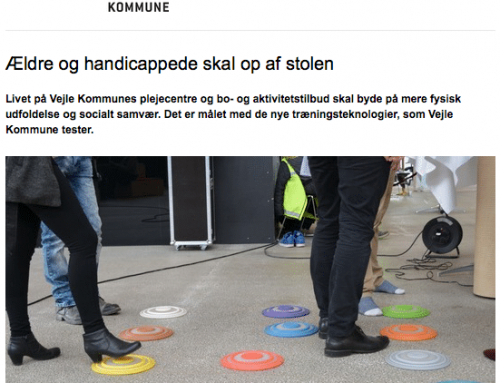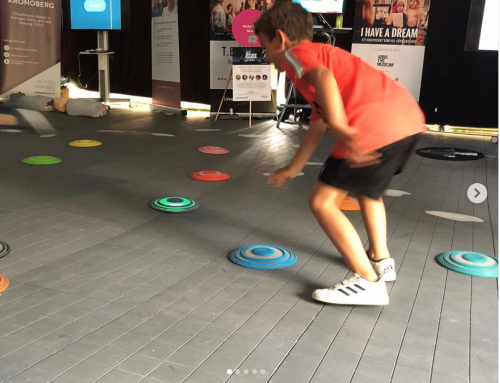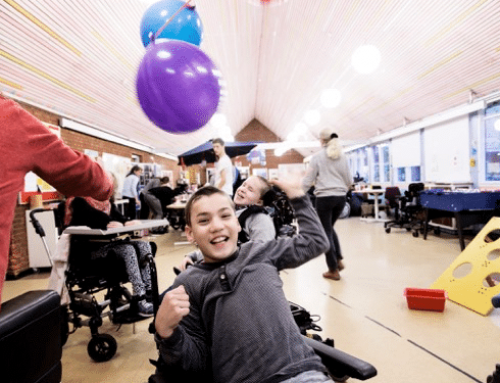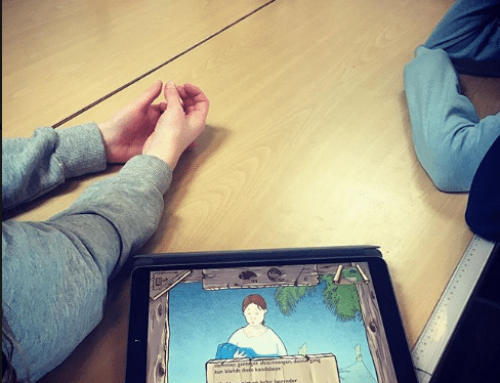Workshop in Funder Børnehus: Music and Movement
By Trine Askjær-Jørgensen
On the 14th of March Hopspots went to Funder Børnehus, where we held a workshop for pedagogues who are part of a so-called media-network in Silkeborg Municipality. This blog is about the workshop, and emphasizes the ideas that were created and experimented with that day, allowing other Hopspots-users to benefit from these and making it possible for interested people to learn more about the different ways one can use Hopspots.
8 pedagogues from four different day care centres in the municipality were present at the workshop together with Aviaja, founder of Hopspots, media-researcher Stine Liv Johansen from Aarhus University and me. The workshop was the first out of four workshops, which are part of a project that is to experiment with creative use of Hopspots in day care institutions.
This time the theme was “Music and Movement”, and therefore we experimented with how Hopspots can be used in relation to that. First, we worked our way through the different games in the Hopspots’ app together, where we brainstormed and experimented with the ideas that came up. But, before that we started out with hearing a bit about the pedagogues’ experiences with Hopspots. The pedagogues at Funder Børnehus had had Hopspots for about a month and among other things said this about it:
“The kids know Hopspots and the games well now, and every time we get it out they are more than ready to play”.
“Sequence works really well; that is, all the kids help each other remember the sequence”
“We used FlowDance for freer playing and for instance for playing freeze dance. They [the children] think that’s so much fun”.
“We tried taking one instrument [on the spots] at a time and then adding more one by one, and the kids were able to hear and tell what was added”.
Afterwards, we went through the different games together, where we experimented with whatever ideas came up.
FlowDance
FlowDance, a music- and dance game, where you can record your own piece of music, choreograph a dance and do a dance-off on the spots, really allows for working with music and movement in many different ways. As the theme of the day was music and movement specifically, we particularly used a lot of time on experimenting with the possibilities in FlowDance. Among other things we talked about the possibility of dividing the instruments up into groups and working with different rhythm sections or trying out different sound themes. One of the things that the pedagogues also suggested was making a “children’s concert”, where you add “analogue” music – that is combining the instruments on the Hopspots-spots with actual physical instruments. We tried it out with the children and discovered that we could actively engage a lot of children in this way as there are 12 spots and physical instruments on top of that. The feedback from the children was very positive and when we, after the session on FlowDance, asked them what they liked the most, the answer was:
“The part with making the music – it was fun to make music”
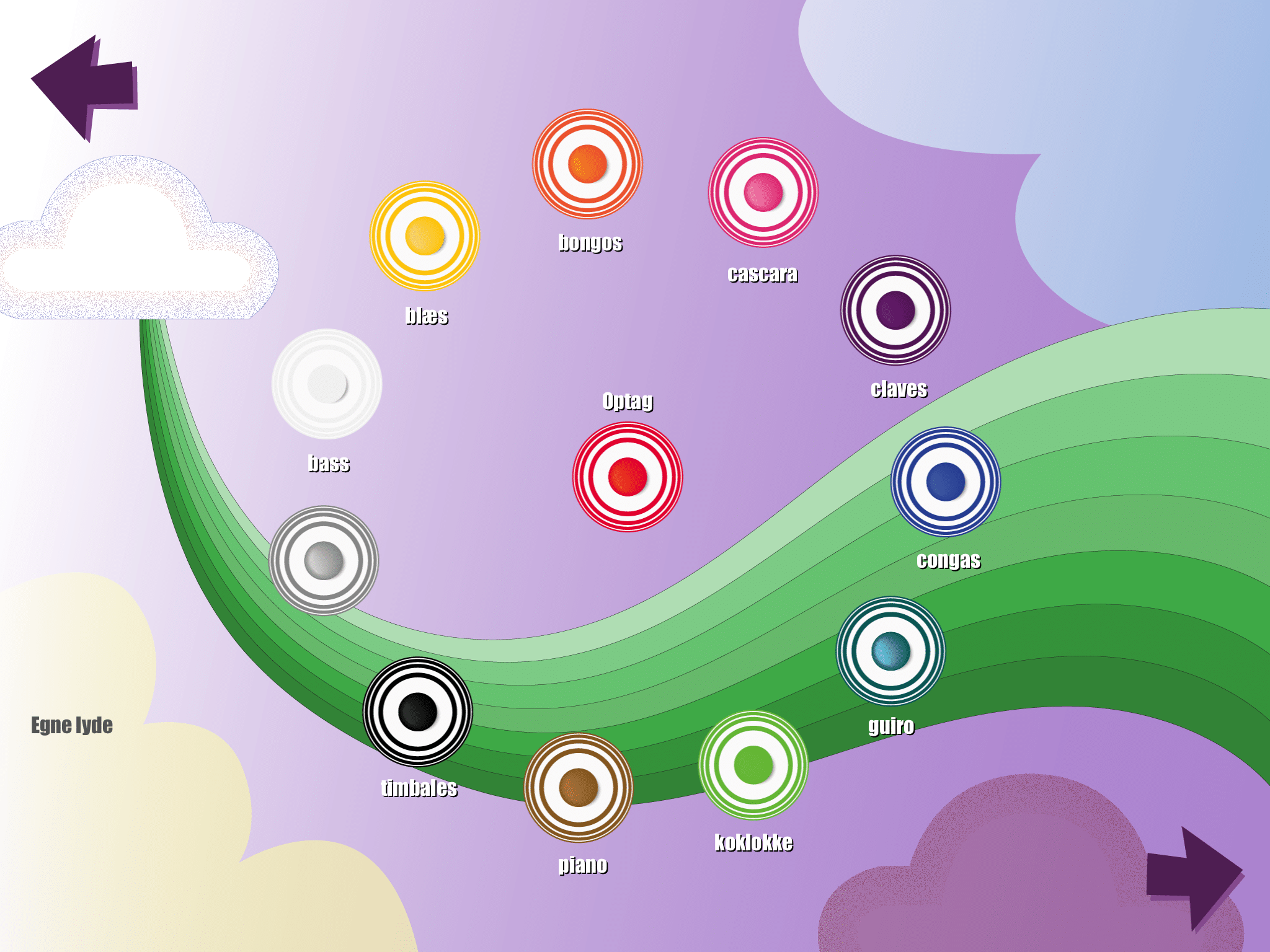
In FlowDance the red spot is the record- and stop-button and the grey button you can record your own sounds onto (max 3 minutes in length). The pedagogues were full of ideas on how to use the two spots. It was suggested that you could use the grey spot e.g., for recording a specific rhythm, bringing the iPad out into nature to record a sound outside or perhaps one of the players can make funny sound. You could also sing part of a song, record a rhyme, record physical instruments, clap your hands in a cool rhythm etc. Let your imagination run wild when recording sounds onto the grey spot!
The red spot, as mentioned above, is used for recording the music, but it could also be used for a game of freeze dance. Start all the instruments and play freeze dance, where someone controls the red spot and pauses it causing everyone to freeze because if you don’t it’s game over for you. When we tried a game of freeze dance with the kids and pedagogues, it worked really well that the kids danced around among each other and sometimes stepped on the spot-instruments to change the sound of the music. One child was chosen to be in charge of the red spot thus he/she decided who didn’t freeze in time whenever he/she stopped the music.
There were also plenty of ideas on how to play with the dance part of FlowDance, where you choreograph a dance and do a dance-off afterwards. The suggestions, among others, were that you could do the dancing in groups by dividing the children into small groups with a couple of spots each because in the way you can make a dance together several players at a time and actively engage a lot of children rather than just having one child choreograph a dance and another doing the dance-off afterwards. Another option is that you record a dance synchronously by dividing the spots into groups and having the children work together on making the dance and deciding which spot to step on when. The possibilities are endless in FlowDance.
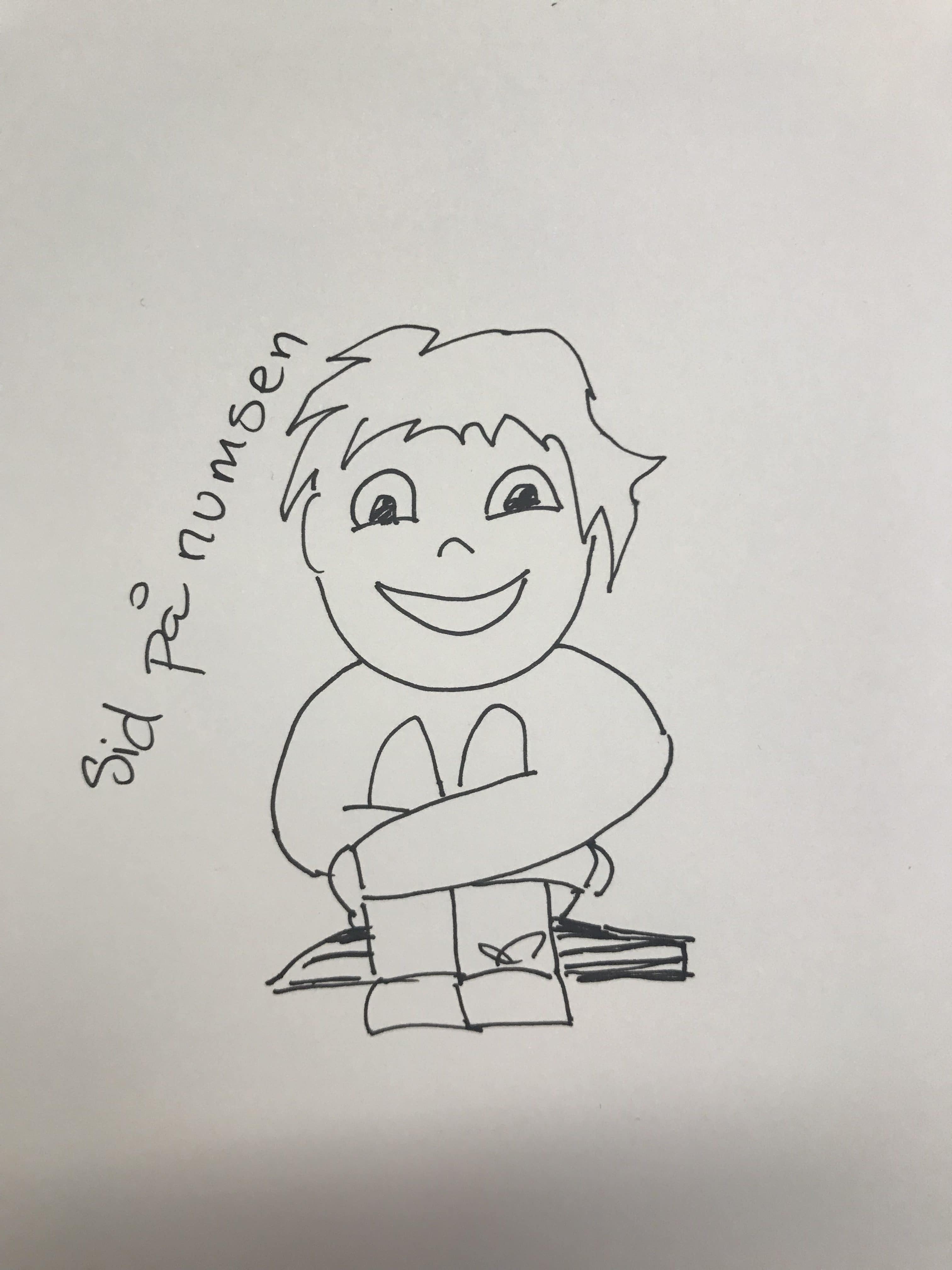
Sequence
There were also plenty of great ideas for the use of Sequence. The pedagogues suggested that the spots are spread out far from each other, making the children run the sequence, and perhaps placing some spots behind things making the game harder and getting the children to move more. In the game of Sequence you use your head, body and senses to remember the sequence thus you could also ask the children about what type of movement they think of when they hear a specific sound. You see, each of the spots have their own sound in Sequence thus you could have fun making up a sequence or a course of different movements/ways of pressing the spots. Perhaps you would have to sit down on the brown spot, which makes a fart when you press it, jump on another spot, press yet another spot with your hands etc.
The Chase
When we talked to the pedagogues about their experiences with Hopspots in the beginning, they among others said the following: “When we get Hopspots out for playing, our experience is that then the children are in a hurry to play. They just want to press the spots right away and get started playing because they think it’s so much fun. Often we start with The Chase to burn some energy and get the children’s focus”.
The Chase is the Hopspots game that children like the most because they get to be active, and it is quick and easy to play a game because there’s not a lot of learning content in it. In The Chase the task is to catch red and green light which pops up on the spots. There are 30 different levels that challenge players to move in different ways e.g., catch the light by stepping on the spot, doing jumping jacks, sitting or standing on the spot etc. Thus, children are challenged physically. When we tried The Chase with the kids at Funder Børnehus, we tested whether or not day care-age children could press the spots with their hands and bottoms. It all worked perfectly well but when asked about what they found the most fun, the children preferred stepping on the spots with their feet because that allowed them to run around and catch the light more quickly compared to if they had to sit down on the spots.
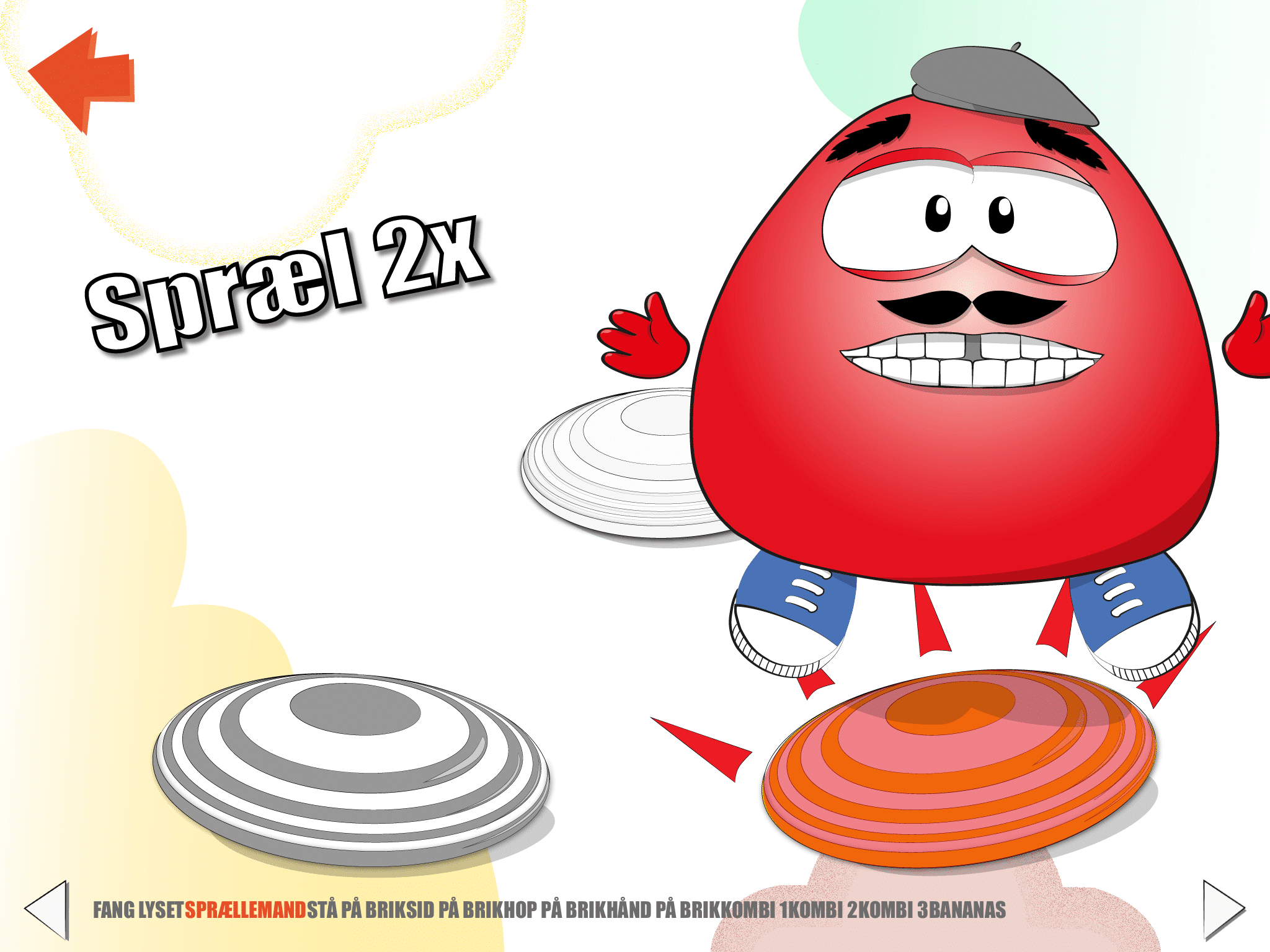
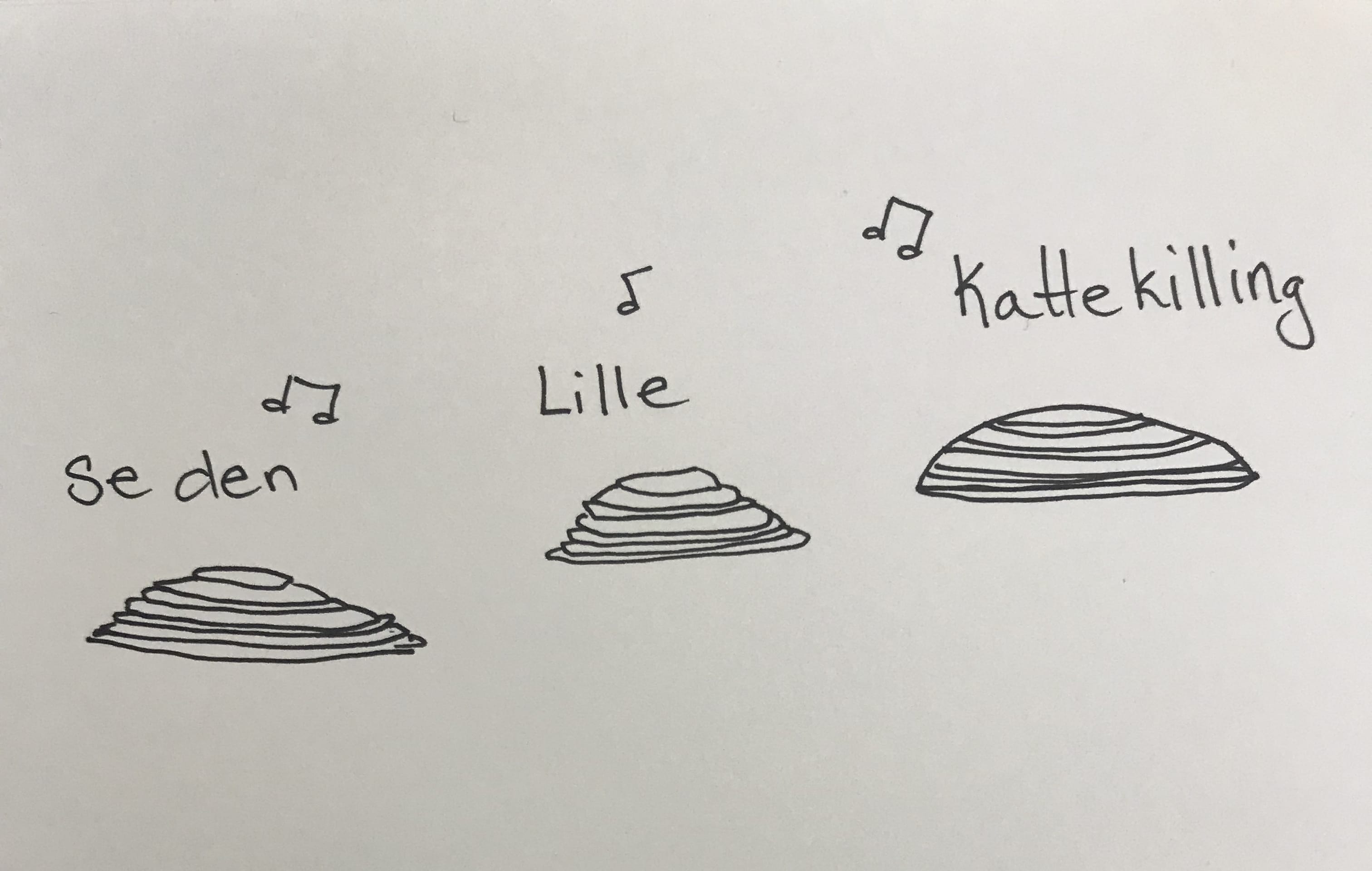
Code a Spot
As the most open and programmable platform in the Hopspots app, the possibilities are almost endless in Code a Spot. Here the pedagogues were once again full of excellent ideas for programming fun and educational content. For instance, they suggested that you could record a few lines from a song, record rhymes, make compound words/sentences, record brief pieces of music, instruments, sounds from nature etc. Children can also learn quite a lot if you record content onto 1-3 of the spots that doesn’t fit into an order creating a task of finding the odd one out e.g., in a story, a song or an order. There were loads of new ideas for playing with Code a Spot that day.
Mix’n’Match
Mix’n’Match is also highly open for programming one’s own learning content, but in pairs rather than in orders as in Code a Spot. Stine Liv Johansen, media-researcher at Aarhus University, among others said the following about the possibility of programming content in the Hopspots app:
“We want children to become digital co-creators because at home they are used to consuming complete games etc., but we want them to work with the digital content they meet. It’s important that they learn that they can affect it. They can quickly get used to everything on the iPad just being complete and ready for them”. Here Stine really captures the essence of why CxD wants children to be let loose with Hopspots so that they can become innovative co-creators.
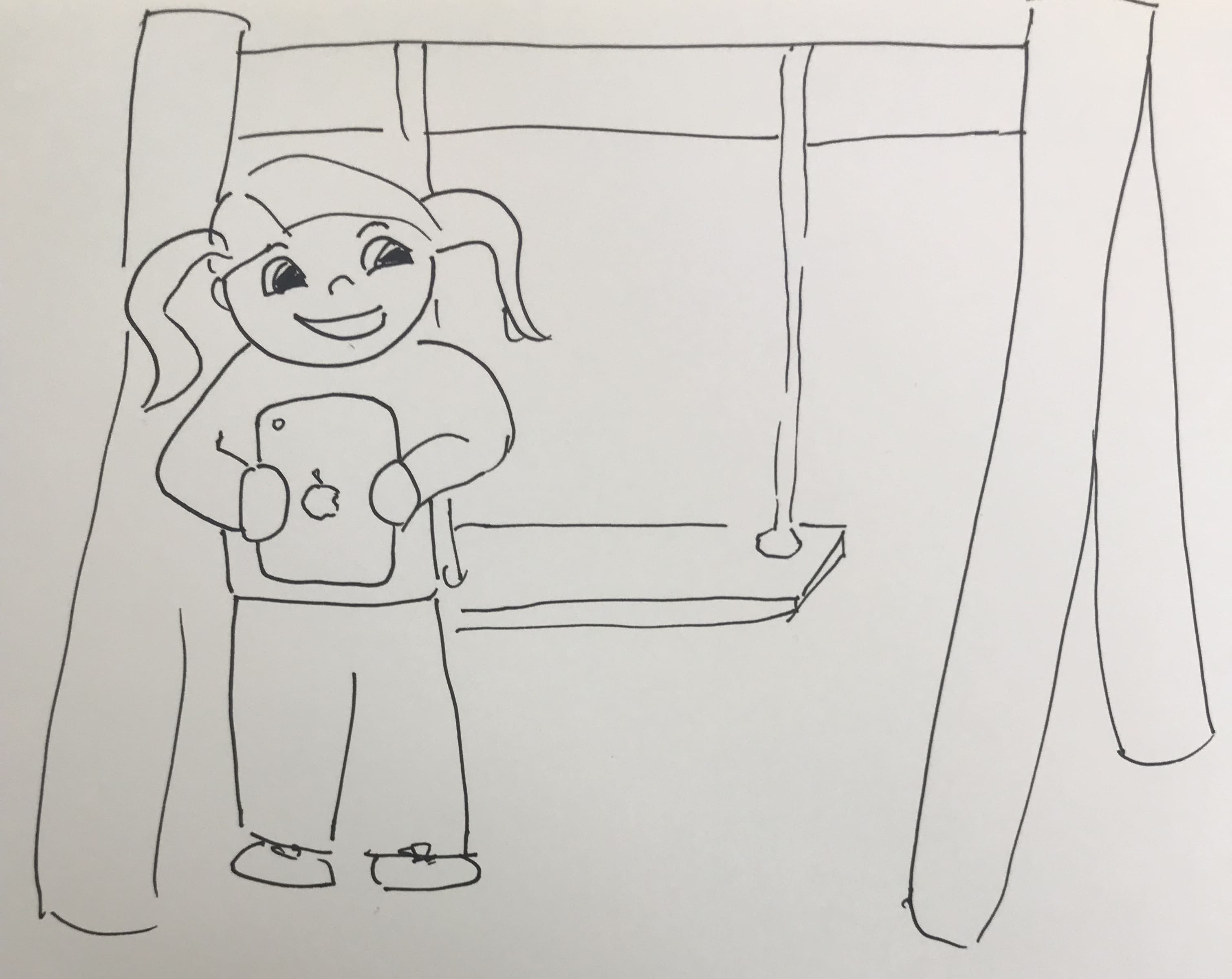
The pedagogues on the workshop had experienced that when they want to programme their own content in Mix’n’Match together with the children, it’s a good idea that the adult first explains the task to the children because otherwise it’s hard for them to get any ideas. But, once the children have understood the task the pedagogues have generally experienced that they are quick to take over and are extremely creative and full of ideas for which categories, pairs etc. to make. Some of the ideas that came up for Mix’n’Match that day were making a game with sounds from things at the day care institution. You would then have to match for instance the sound of the creaking swing and an explanation of what it is, or you could also match tiny bits of a song. The possibilities are endless.
After the workshop at Funder Børnehus the pedagogues were equipped with plenty of great ideas for using Hopspots and they really wanted to keep Hopspots for longer in the institution. They both got new ideas for playing in the way that they usually do with the pedagogues as the facilitators, but also for letting the children become more in charge of the games, making Hopspots more a part of their own free play. At CxD/Hopspots we look forward to the coming workshops and our continuous collaboration with pedagogues etc. on the project, which is very informative to us and the day care institutions.
About the Author: Trine Askjær-Jørgensen
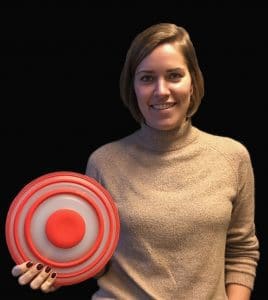
With her background as an MA in English Trine is skilled in English specifically and she has knowledge about topics such as cognition, language acquisition etc. Her job at Hopspots is to do translations, proofread as well as write content for our English website, Facebook and so on.


